
The northern rough-winged swallow is a small, migratory swallow. It is very similar to the southern rough-winged swallow, Stelgidopteryx ruficollis.

The violet sabrewing is a species of hummingbird in the "emeralds", tribe Trochilini of the subfamily Trochilinae. It is found from Mexico to Panama.
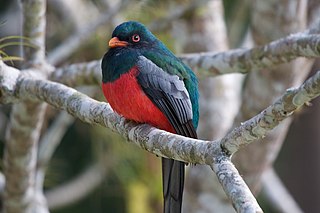
The slaty-tailed trogon is a near passerine bird in the family Trogonidae, the quetzals and trogons. It is found in Mexico, throughout Central America, and in Colombia and Ecuador.
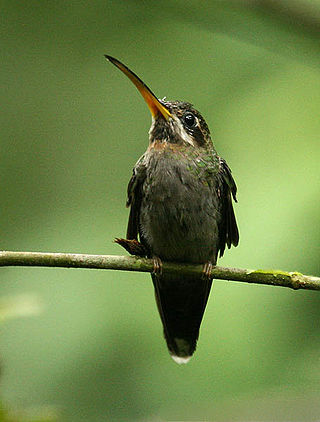
The band-tailed barbthroat is a medium-sized hummingbird that is found from southeastern Guatemala and Belize to western Ecuador and western Venezuela.

The pale-billed woodpecker is a species of bird in subfamily Picinae of the woodpecker family Picidae. It is found from Mexico to Panama.

The ruddy woodcreeper is a passerine bird in subfamily Dendrocolaptinae of the ovenbird family Furnariidae. It is found from southern Mexico to northern Colombia and extreme northern Venezuela.
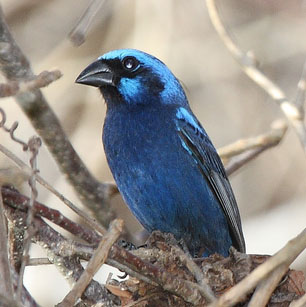
The blue bunting is a species of passerine in the family Cardinalidae, the cardinals or cardinal grosbeaks. It is found in Belize, El Salvador, Guatemala, Honduras, Mexico, and Nicaragua.

The singing quail is a species of bird in the family Odontophoridae, the New World quail. It is found in Belize, El Salvador, Guatemala, Honduras, and Mexico.

The buffy-crowned wood partridge is a bird species in the family Odontophoridae, the New World quail. It is found in Mexico, Guatemala, Honduras, El Salvador, Costa Rica and Nicaragua.

The tawny-faced quail is a species of bird in the family Odontophoridae, the New World quail. It is found in Colombia, Costa Rica, Ecuador, Honduras, Nicaragua, and Panama.

The olive-throated parakeet, also known as the olive-throated conure in aviculture, is a species of bird in subfamily Arinae of the family Psittacidae, the African and New World parrots. It is found from Mexico to Costa Rica and in Jamaica; it has been introduced to the Dominican Republic on Hispaniola.
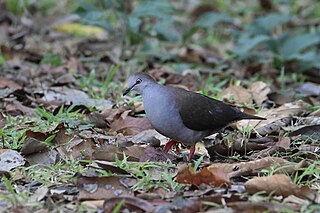
The grey-chested dove is a species of bird in the family Columbidae. It is found in Belize, Colombia, Costa Rica, Guatemala, Honduras, Mexico, Nicaragua, and Panama.

The blue-throated motmot is a species of bird in the family Momotidae. It is found in El Salvador, Guatemala, Honduras, and Mexico.

The white-throated crake is a species of bird in subfamily Rallinae of family Rallidae, the rails, gallinules, and coots. It is found in Colombia, Costa Rica, Ecuador, Honduras, Nicaragua, Panama, and Venezuela.

The grey-breasted crake is a species of bird in subfamily Rallinae of family Rallidae, the rails, gallinules, and coots. It is found in Belize, Costa Rica, Guatemala, Honduras, Nicaragua, Panama, Trinidad and Tobago, and every mainland South American country except Chile and Uruguay.
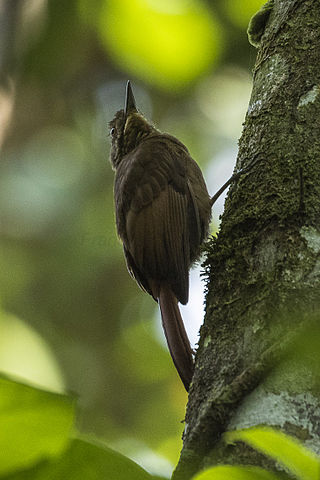
The tawny-winged woodcreeper is a passerine bird in subfamily Dendrocolaptinae of the ovenbird family Furnariidae. It is found in Belize, Costa Rica, Guatemala, Honduras, Mexico, Nicaragua, and Panama.
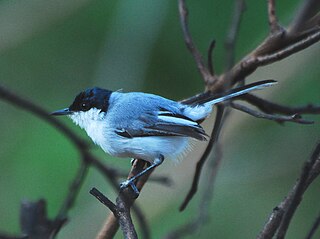
The white-lored gnatcatcher is a species of bird in the family Polioptilidae. It is found in Costa Rica, El Salvador, Guatemala, Honduras, Mexico, and Nicaragua.

The spot-breasted wren is a species of bird in the family Troglodytidae. It is found in Belize, Costa Rica, El Salvador, Guatemala, Honduras, Mexico, and Nicaragua.
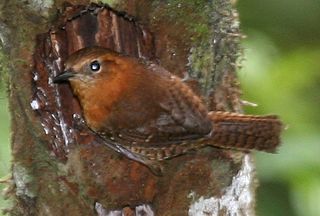
The rufous-browed wren is a species of bird in the family Troglodytidae. It is found in Central America from Mexico south into Nicaragua.

The gartered trogon, also known as the northern violaceous trogon, is a bird in the family Trogonidae, the quetzals and trogons. It is found in Mexico, all of Central America, and Colombia, Ecuador, Peru, and Venezuela.






















